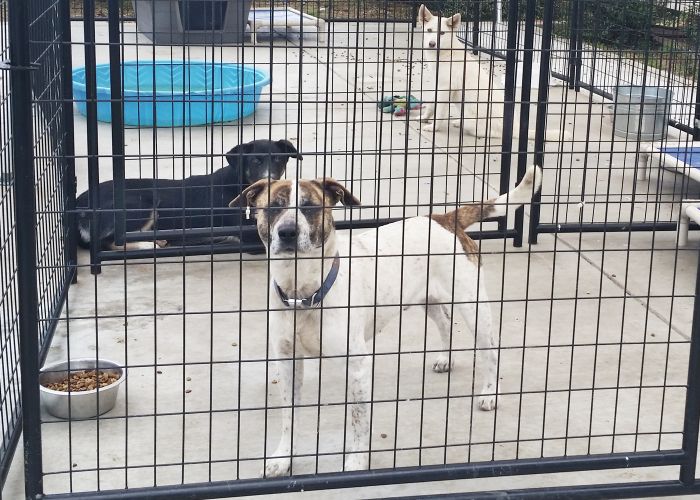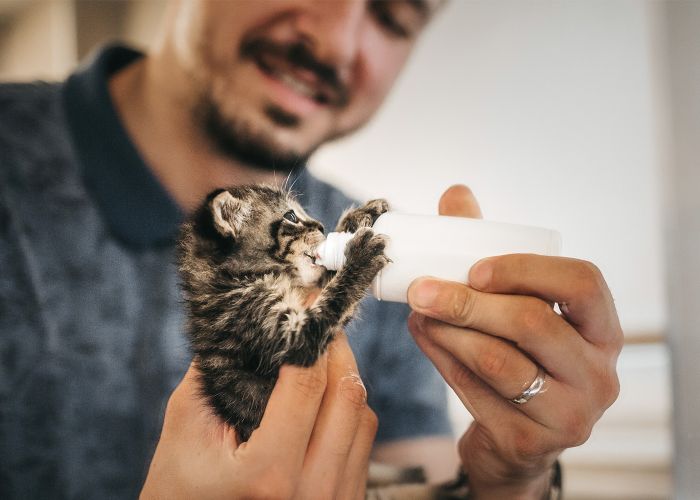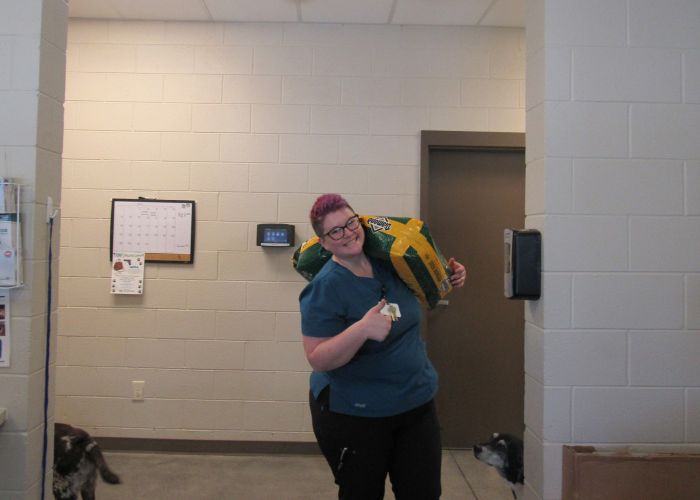Hope in the heartland
Ohio law could trigger more reforms in the puppy mill industry
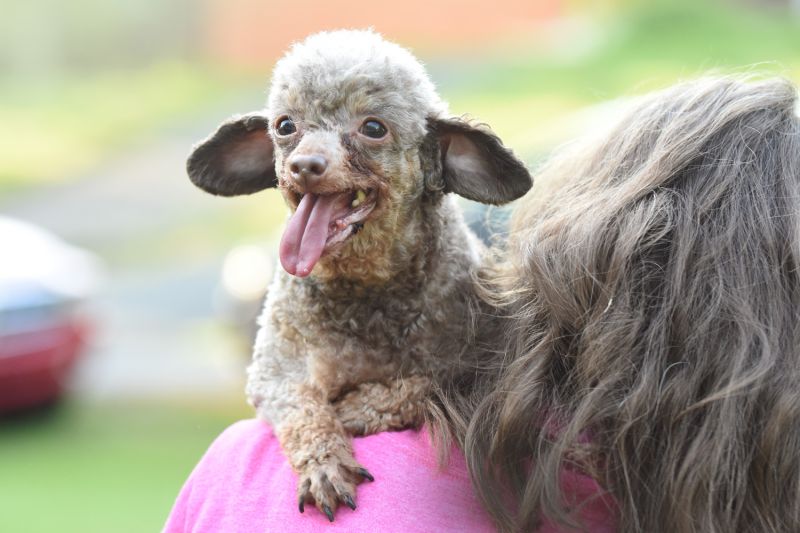
When Kym Black’s granddaughter bought a 9-month-old Maltese-Yorkie mix named Gus, she thought she was getting an adorable bargain. “Morkie” puppies typically cost at least $1,000 at a pet store, but a Facebook friend sold Gus for half that amount.
Within a week, Gus started having seizures. Black’s granddaughter took him to the local veterinarian, who was surprised: He’d seen this dog before. Gus’ original owner bought him at a Petland store in Rome, Georgia, and sold him when it became clear he was sick. His second owner brought him to the veterinarian—and then she also sold him, this time to Black’s granddaughter.
Gus was prescribed medicine as a stopgap measure until Black’s granddaughter could come up with the funds for a permanent fix. But when Black watched Gus while her granddaughter was out of town, she came home to find him suffering continuous seizures.
After calling another veterinarian, Black and her husband did the only thing they could think of to save him: They drove at breakneck speed to Auburn University College of Veterinary Medicine, three hours away. Black thought Gus was going to die right there in the car. Instead, he was diagnosed with a liver shunt, a condition that prevents the liver from functioning as it should, and underwent emergency surgery.
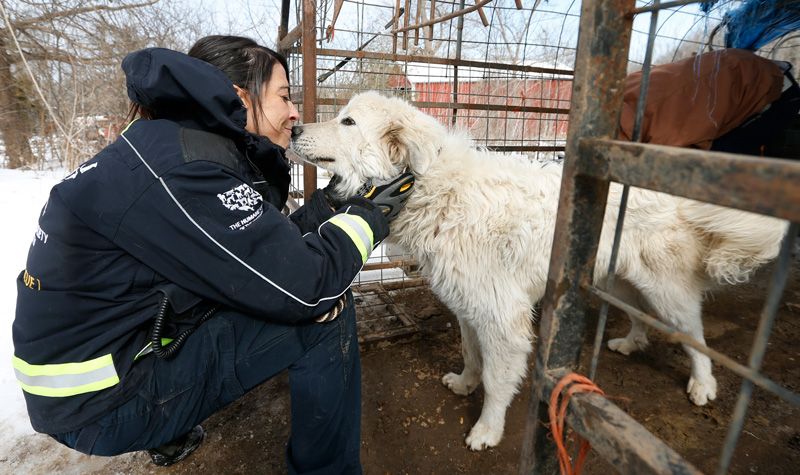
Although he’s healthy now, Gus has permanent brain damage from the repeated seizures. He isn’t house-trained, and he has difficulty with stairs. All in all, Black and her husband spent $3,000 on his care.
“That part doesn’t matter to me because I know he’s OK,” says Black, who learned that the hereditary condition is passed from parents to puppies. “But what does matter is how many other litters does [the parent] dog have, and how many people went through what we went through, and their dog died, and they don’t even know why?”
Black says this with the calm determination of a woman who told her granddaughter that Gus now needed special care, so he’d be staying at Grandma’s for good; who demanded Gus' medical documentation from Petland, his former veterinarians and his former owners; who submitted her findings to the state attorney general, the local newspaper, the Better Business Bureau and the Humane Society of the United States. The only time her voice wavers is when she talks about how Gus seized and vomited all the way to Auburn University, his body limp as a dishrag.
Gus’ Petland health form is cursory at best: “Weakness?” the veterinarian wrote, before certifying him healthy and fit for sale. Yet that veterinarian told Black she recommended that the store euthanize Gus. “I’m sure they thought, ‘$1,000? I’m not going to euthanize $1,000,’” Black speculates. “They use them like little machines; they don’t care that something’s wrong with them.”
The health form does offer some clues into Gus’ past. It lists his birthday, Oct. 10, 2015—although bad breeders have been known to falsify birthdates so they can sell underage puppies—a breeder, David N. Miller of Millersburg, Ohio, and a distributor, the USDA-licensed Quail Creek Kennels. This distributor, also known as a broker, buys up puppies—primarily from breeders in Ohio—and sells them to pet stores in other states. (The distributor now operates under a different name.)
Black surmises that by the time Gus reached her in July 2016, his malnourished, 6-pound, 6-ounce body had been bought and sold multiple times and shuttled across three states: from a breeder in Ohio, to a distributor in Ohio, to a pet store in Georgia, to an owner in Georgia, to two separate owners in Alabama. This is much the way a household object—a television, for example—makes its way from a factory, to a distributor, to an electronics store, to a buyer, to a secondhand buyer.
Mass purchases, distributors and distribution chains aren’t what most people associate with their puppy’s origins. But for hundreds of thousands of puppy mill puppies each year, it’s how they begin their often too-short lives—and representative of how little bad breeders care for their cargo, from conception to death.

A cultural disconnect
“There is not a more emotional purchase than a puppy,” says an undercover investigator for the Humane Society of the United States. She says a puppy distributor based in Ohio once told her he used to sell cars, but puppies sell themselves—no haggling required. “It’s easy to sell puppies,” she says. “The only hard part is clouding over the origins of the puppies and making it all seem OK.”
People who buy puppy mill dogs often don’t know that they’re buying puppy mill dogs, who come from inhumane breeding operations where “animals are neglected to save costs,” says John Goodwin, senior director of the HSUS Stop Puppy Mills campaign. Many puppy mills sell and ship dogs to brokers, who might sell and ship puppies directly to online shoppers, or to pet stores, or to smaller retailers. Those retailers might sell them online, at flea markets or from their cars or homes, claiming to be small family breeders or to source dogs from trusted local hobbyists.
When it comes to commercial dog breeders, “you couldn’t design [a system] better if you tried. It’s designed to basically get the customer as far away from the truth of where their dog came from as possible,” says Rory Kress, journalist and author of The Doggie in the Window. Curious about the origins of her own pet store dog, Izzie, Kress spent a year digging up documentation and interviewing animal welfare experts, USDA and other government employees, veterinarians, breeders, buyers and other experts as research for her book.
When she eventually tracked down Izzie’s breeder in Missouri, she discovered that her dog’s backstory was wildly different from the one constructed for her in the pet store. She went home and asked Izzie: “Who are you?”
In a society that places such high emotional value on canine companions, it’s a shocking reality that the puppy industry is able to make millions at the expense of parent dogs, who might live their entire lives in cages before being killed, and puppies, who are often inbred—and therefore susceptible to hereditary diseases—and shipped across the country before their immune systems are fully developed.

Yet the only protection the federal government offers the dogs who supply many of our nation’s pets is the Animal Welfare Act, which was signed into law in 1966. As the sole federal law protecting animals sold in commerce, which include breeder dogs and puppies, “it’s better than nothing,” says Goodwin, but “it needs to be upgraded significantly, because commercial dog breeding facilities can keep dogs in conditions anyone else would consider animal cruelty. It needs to be upgraded so that the standards are consistent with what the American public expects.”
The law says nothing about preventing genetic illnesses like Gus’ liver shunt, but requires breeders with more than four female breeding dogs who sell to pet stores, brokers or research facilities—or those who sell online—to uphold bare minimum standards of care. Few state laws mandate standards of care that are any better, and only about 18 states conduct breeder inspections.
USDA inspectors repeatedly find breeders in violation of the act’s minimal standards, but rarely revoke a breeder’s license: The HSUS confirmed that while the USDA revoked just nine licenses in 2016, inspectors failed to revoke even a single license over the past year. “This is an indication that things are getting worse,” says Kathleen Summers, HSUS director of puppy mills outreach and research.
And even some breeders who pass inspections every year are unquestionably operating puppy mills. “Under the USDA regulations, a puppy mill can keep a dog in a cage only six inches longer than her body, with her paws never touching grass, for her entire life, and that is entirely legal,” says Goodwin.
Kress also found that USDA inspectors may choose to treat violations as off-the-record teachable moments, rather than recording them as violations. And through the government’s own documentation, she discovered that a state inspector and a federal inspector visiting the same facility, on the same day, might “paint a completely different picture of the same operation.”
“It's easy to sell puppies. The only hard part is clouding over the origins of the puppies and making it all seem OK.”
—HSUS undercover investigator
To give the public a more complete view of what’s happening, the HSUS puppy mills team combs through state and USDA inspection reports, as well as puppy buyer complaints submitted to the HSUS. In 2017, 12 puppy mills in Ohio made the HSUS Horrible Hundred list, an annual report detailing some of the nation’s most problematic puppy mills. (Gus’ distributor, Quail Creek Kennels, made the Horrible Hundred in 2016.)
Yet it’s still an incomplete picture, because each year the USDA only inspects around 2,600 of an estimated 10,000 puppy mills in the U.S., and only a fraction of puppy buyers submit complaints. And in February 2017, the USDA removed even these imperfect records from its website, kneecapping efforts to track bad breeders and making it impossible for authorities to enforce the few state and city laws that ban the sale of dogs from breeders with severe Animal Welfare Act violations.
The USDA has since restored some reports, although most are heavily redacted: Violations are listed without breeder names, kennel names or license numbers. What the available reports and buyer complaints do reveal is that within the boundaries of the Animal Welfare Act, hundreds of kennels legally breed, raise and sell dogs in ways that most would call animal cruelty— and a large percentage of those kennels operate in Ohio.
A sampling of what USDA inspectors found in Ohio last year—at licensed facilities— includes moldy food and filthy water; rusted and feces-crusted outdoor shelters outfitted with painful wire flooring and teeming with flies; and severe, painful medical issues.
“Unfortunately, our state doesn’t see commercial dog breeding as a problem, but as a business,” says Corey Roscoe, HSUS Ohio state director.
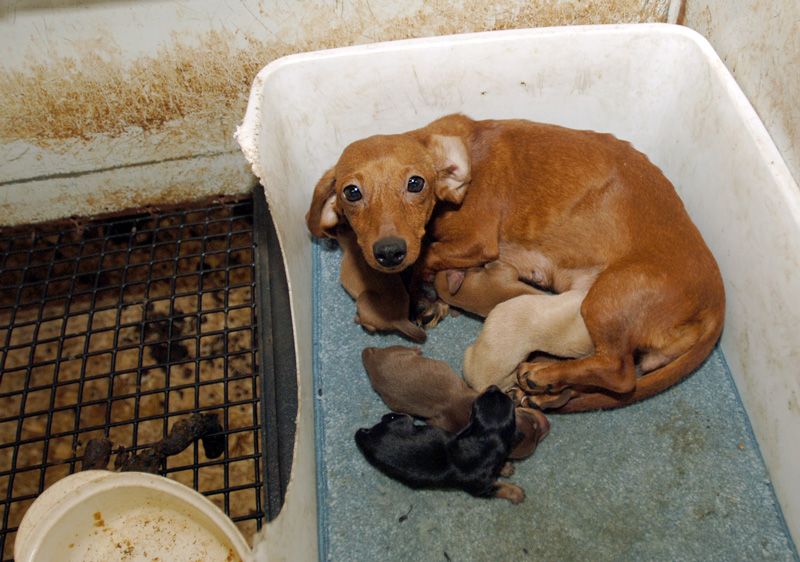
Homegrown advocacy
That’s why in 2017, the Humane Society of the United States helped launch Stop Puppy Mills Ohio, a volunteer-driven campaign to get an amendment on the November 2018 ballot that would have secured protections for breeding dogs in the Ohio Constitution. (In Ohio—one of the 24 states that allow ballot initiatives—if enough signatures are collected from registered voters, an amendment can get on the ballot, and the public can vote it into law.)
But as the signature-gathering period drew to a close, the Ohio General Assembly decided to address the issue through the legislative process, instead, with a bill that would offer breeding dogs much of the same protections as the proposed amendment. “Volunteers’ signature-gathering efforts are the only reason we’re in a position to be able to do this,” said Goodwin as he negotiated with legislators in May. Finally, in June, state legislators approved the bill, and the governor signed it into law.
Ohio’s previous law required the licensing and inspection of breeders who produce nine litters of puppies and sell at least 60 dogs in a single calendar year. The new law requires the licensing and inspection of all breeders who have six or more breeding female dogs, as well as 40 puppies at any one time, five or more puppies sold through pet stores or brokers, or 40 or more sold through other outlets, annually. There are currently around 300 licensed, high-volume breeders in the state, but Roscoe suspects the real number of commercial breeders is closer to three times that amount.
“A puppy mill can keep a dog in a cage only six inches longer than her body, with her paws never touching grass, for her entire life, and that is entirely legal.”
—John Goodwin, The HSUS
The new law also bans painful wire flooring, prohibits cage stacking, and requires protection from extreme weather, larger enclosures, nutritious food provided at least twice a day, prompt treatment of any illness by a licensed veterinarian and other clear, commonsense standards. It requires yearly veterinary examinations for parent dogs, potentially exposing diseases and congenital defects before they’re passed to future puppies. And it requires those selling puppies to Ohio consumers to ensure the puppies come from breeders that meet those same standards of care, regardless of where the breeders are located, laying a foundation for reform across the nation.
Chris Niehoff, an HSUS district leader volunteer who’s lived in Ohio all his life, is just one of almost 3,000 volunteers who stood for hours in the cold gathering signatures. Improving standards of care in one of the worst puppy mill states has “implications that are far-reaching beyond Ohio,” he says. “… If you think about the ability to start a chain reaction, Ohio wouldn’t be a bad place for that to start.”
UPDATE: After this story first published, Ohio Gov. John Kasich signed legislation that includes some of the most comprehensive anti-puppy mill protections in the country. The law increases standards of care for breeding dogs, such as requiring veterinary visits and clean food and water, and bans cruel practices like stacking cages on on top of one other and keeping dogs in cages with wire flooring. It benefits dogs outside Ohio, too, requiring in-state pet stores that sell puppies to use breeders who meet the same standards, even if the breeder is outside the state.


